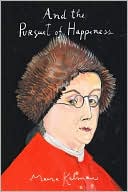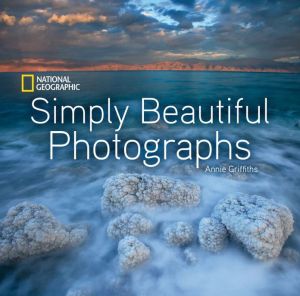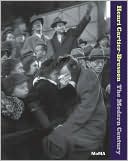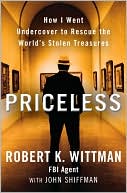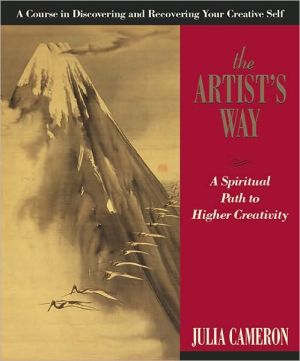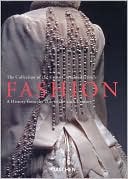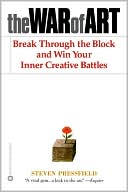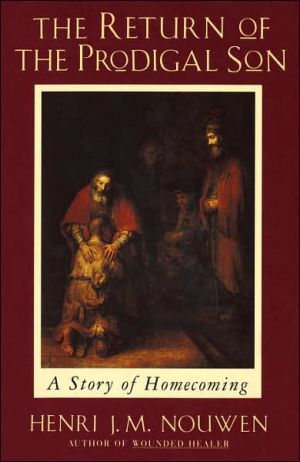Seven Days in the Art World
Named one of the best art books of 2008 by The New York Times and The Sunday Times [London]: “An indelible portrait of a peculiar society.”—Vogue\ The art market has been booming. Museum attendance is surging. More people than ever call themselves artists. Contemporary art has become a mass entertainment, a luxury good, a job description, and, for some, a kind of alternative religion.\ In a series of beautifully paced narratives, Sarah Thornton investigates the drama of a Christie's auction,...
Search in google:
A fly-on-the-wall account of the smart and strange subcultures that make, trade, curate, collect, and hype contemporary art.The Barnes & Noble ReviewSarah Thornton is the type of adventurous, earnestly inquisitive British pop sociologist that Monty Python were given to dropping down manholes. Canadian by birth, Thornton has written on art for The Guardian and The Telegraph; having lived in London for some years, she trained her keen eye on that city's underground music scene in her first sally, 2003's Club Cultures: Music, Media, and Subcultural Capital. Now, in Seven Days in the Art World, she gives us an unvarnished account of the burgeoning international art scene, red in tooth and claw, as only she can give it -- in the first person. Each of the book's seven chapters follows the author over a single day spent in one of the art world's constituent provinces: a Christie's auction; a CalArts group crit; Art Basel; the Tate Museum's presentation of the Turner Prize; the offices of ArtForum; a studio visit with artist rex Takashi Murakami; and the Venice Biennale. In each, we are introduced to the principal players, regaled with anecdotes, offered canapés, and treated the while to what Thornton plainly regards as intriguing details (a gallery director is "comfortably gay"; magazine page proofs are called "galleys"). Thornton's self-conscious objectivity can get very wearing, but it is the price that must be paid for what turns out to be a commendably thorough retrospective of the now-defunct big-money art market. For better and for worse, Seven Days in the Art World is a book that tells you everything you ever wanted to know about the '00s art boom but were afraid to ask Sarah Thornton. --Ian Volner
Introduction ix1 The Auction 12 The Crit 413 The Fair 754 The Prize 1075 The Magazine 1436 The Studio Visit 1817 The Biennale 219Author's Note 255Afterword 261Acknowledgments 267Selected Bibliography 273Illustration Credits 277Index 281
\ New York TimesA field guide to the nomadic tribes of the contemporary art world. The book was reported and written in a heated market, but it is poised to endure as a work of sociology.\ \ \ \ \ Financial TimesEntertaining and lucid...rigorous, precise reportage.\ \ \ Washington PostAn exhaustively researched and intelligently written. . . refreshingly open-minded exploration.\ \ \ \ \ Sunday Times [London]The best book yet written about the modern-art boom . . . a vivid, wittily written . . . Robert Altmanesque panorama.\ \ \ \ \ BusinessWeekA terrific book—detailed, gossipy, and insightful. . . . By the end of the book, you almost understand how [Steve] Cohen could shell out $8 million for a rotting 14-foot shark pickled in formaldehyde.\ \ \ \ \ TimeA one-stop tutorial on an often insular subculture . . . light-hearted but sociologically acute.\ \ \ \ \ Annie Buckley - Artweek“Finely wrought and thoroughly researched…[with] an ingenious structure… and spot-on characterizations…the author draws readers into the experience… [with her] infectious curiosity and meticulous reporting.”\ \ \ \ \ Barbara Fisher - Boston Globe“'The contemporary art world is a loose network of overlapping subcultures held together by a belief in art,’ writes Thornton, and we are fortunate that she was able to penetrate all of these opaque, protected, and often secretive groups.”\ \ \ \ \ ArtweekFinely wrought and thoroughly researched…[with] an ingenious structure… and spot-on characterizations…the author draws readers into the experience… [with her] infectious curiosity and meticulous reporting.— Annie Buckley\ \ \ \ \ Boston GlobeThe contemporary art world is a loose network of overlapping subcultures held together by a belief in art,’ writes Thornton, and we are fortunate that she was able to penetrate all of these opaque, protected, and often secretive groups.— Barbara Fisher\ \ \ \ \ Mia FinemanThe book is cleverly divided into seven day-in-the-life chapters, each focusing on a different facet of the contemporary art world: an auction (at Christie's New York), an art school "crit" (at the California Institute of the Arts in Valencia), an art fair (Art Basel), an artist's studio (that of the Japanese star Takashi Murakami), a prize (Britain's prestigious Turner Prize), a magazine (Artforum) and a biennale (Venice). Thornton is a smart and savvy guide with a keen understanding of the subtle power dynamics that animate each of these interconnected milieus.\ —The New York Times\ \ \ \ \ Publishers WeeklyThe hot, hip contemporary art world, argues sociologist Thornton, is a cluster of intermingling subcultures unified by the belief, whether genuine or feigned, that "nothing is more important than the art itself." It is a conviction, she asserts, that has transformed contemporary art into "a kind of alternative religion for atheists." Thornton, a contributor to Artforum.com and the New Yorker, presents an astute and often entertaining ethnography of this status-driven world. Each of the seven chapters is a keenly observed profile of that world's highest echelons: a Christie's auction, a "crit" session at the California Institute of the Arts and the Art Basel art fair. The chapter on auctions (where one auction-goer explains, "[I]t's dangerous to wear Prada.... You might get caught in the same outfit as three members of Christie's staff") is one of the book's strongest; the author's conversations about the role of the art critic with Artforum editor-in-chief Tim Griffin and the New Yorker's Peter Schjeldahl are edifying. Thornton offers an elegant, evocative, sardonic view into some of the art world's most prestigious institutions. 8 illus. (Nov.)\ Copyright © Reed Business Information, a division of Reed Elsevier Inc. All rights reserved.\ \ \ \ \ Kirkus ReviewsNew Yorker and Artforum.com contributor Thornton (Club Cultures, 1996) takes a wide-angle view of art as creation-but also as production, marketing, personality and mega-profit. Her narrative moves gracefully across international boundaries, cultures, languages and genres. After a few generic remarks about today's art world, which she deems "polycentric" (less anchored in Paris and New York), the author considers why art has become so popular. We are more educated, she avers, more global and more affluent. High prices generate media attention; media attention generates more of everything. Thornton then takes us behind the scenes at a Christie's auction where bidding for a 1963 Warhol began at $8 million dollars. She interviews an assortment of people, including artist Keith Tyson, who declares auctions to be "vulgar, in the same way that pornography is vulgar." Next, she whisks us to California for an all-day session with artist/teacher Michael Asher. He's conducting a "crit": a collective critique of students' proposals and projects. Then to Switzerland for a massive contemporary art fair, where VIPs line up outside before the opening like nervous daddies hoping to nab his kid the newest PlayStation. The author takes us into the jury room for the Turner Prize at the Tate Gallery and inside the editorial offices at Artforum. Of that venerable publication, circulation about 60,000, Thornton extracts from some readers the confession that they simply look at the picture. "The Studio Visit" follows prolific Japanese artist Takashi Murakami through his three studios. The Venice Biennale gives the author a chance to catch up on her lap swimming in the Hotel Cipriani's 100-foot saltwater pool.Thornton conducted many interviews in preparation for her "days" and later admits that she sometimes employed a technique she calls "displaced nonfiction," quoting, for example, as a comment from an exhibition crowd something she actually noted in a prior (or later) phone conversation. An exhilarating guided tour of some very exclusive circles. Agent: David Kuhn/Kuhn Projects\ \ \ \ \ The Barnes & Noble ReviewSarah Thornton is the type of adventurous, earnestly inquisitive British pop sociologist that Monty Python were given to dropping down manholes. Canadian by birth, Thornton has written on art for The Guardian and The Telegraph; having lived in London for some years, she trained her keen eye on that city's underground music scene in her first sally, 2003's Club Cultures: Music, Media, and Subcultural Capital. Now, in Seven Days in the Art World, she gives us an unvarnished account of the burgeoning international art scene, red in tooth and claw, as only she can give it -- in the first person. Each of the book's seven chapters follows the author over a single day spent in one of the art world's constituent provinces: a Christie's auction; a CalArts group crit; Art Basel; the Tate Museum's presentation of the Turner Prize; the offices of ArtForum; a studio visit with artist rex Takashi Murakami; and the Venice Biennale. In each, we are introduced to the principal players, regaled with anecdotes, offered canapés, and treated the while to what Thornton plainly regards as intriguing details (a gallery director is "comfortably gay"; magazine page proofs are called "galleys"). Thornton's self-conscious objectivity can get very wearing, but it is the price that must be paid for what turns out to be a commendably thorough retrospective of the now-defunct big-money art market. For better and for worse, Seven Days in the Art World is a book that tells you everything you ever wanted to know about the '00s art boom but were afraid to ask Sarah Thornton. --Ian Volner\ \

